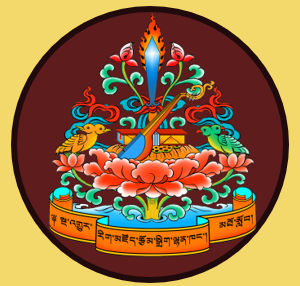All of the Buddhist teachings can be explained in terms of ground, path and fruition. In the general concept of Mahayana Buddhism, ground is referred to as Buddha nature, where it is explained that all sentient beings have the potential to become Buddha, or have the seed of enlightenment within their mindstreams. Due to constant afflictive emotions, this innate Buddha nature is obscured, but we can reveal this true nature by following the right path. When the path is accomplished and the ground is fully realized, we become Buddha, the ultimate fruition of Buddhist practice. This fruition is further classified into two or three kayas. Although there is no difference in their nature, these kayas appear in three forms according to the merit accumulated by beings.
In general, ‘kaya’ refers to the abandonment of the afflictive emotions and the realization of two benefits—for self and others—which are the result of the completion of two accumulations: merit and wisdom. In short, the kaya that is the object of only the Buddha himself as self-appearance is Dharmakaya, which appears only to pure disciples as Sambhogakaya and appears to both pure and impure disciples as Nirmanakaya.
Dharmakaya
(Ultimate Body)
Dharmakaya is the complete realization of the non-dual nature of emptiness and wisdom like empty space, free of all impurities. It is defined as the ultimate wisdom of the complete abandonment of the two obscurations—emotional obscurations and the obscuration of omniscience. This is established in the personal experience of the Akanisthaheaven which transcends the three realms. The perfect Buddha resides there and will attain Dharmakaya or the Ultimate Body. It has two types of wisdom: the understanding of the complete ultimate realization and the complete conventional realization.
Sambhogakaya
(Complete Enjoyment Body)
Sambhogakaya is the complete accomplishment of the appearance factor of basic existence through the spontaneous disappearance of the eight consciousnesses including the foundational consciousness of mundane existence. It consists of five certainties:
1) The certainty of the abode: Akanistha heaven
2) The certainty of the retinue: Bodhisattvas on all ten levels
3) The certainty of the teaching: Mahayana teachings
4) The certainty of the body: a body adorned with all the major and minor marks
5) The certainty of the time: the continuous wheel of eternity
These certain appearances are like immutable gems and not similar to that which appears to ordinary beings. It is not that they cannot be perceived, like the nature of emptiness; they abide in the awareness wisdom like a wish-fulfilling jewel or a rainbow which seems to appear but doesn’t exist. Likewise, this is the complete enjoyment body, bearing the manifestation of the thirty-two major and eighty minor marks of goodness of Buddhas and tenth-level Bodhisattvas. It definitely experiences the extreme joy and the bliss of peace and happiness afforded by Mahayana teachings without any unwholesome action. It too has two aspects, of which one is perceived only by tenth-level Bodhisattvas and the other is perceived by Bodhisattvas on all the ten levels.
Nirmanakaya
(Emanation Body)
Nirmanakaya is the act of appearing in the world, without wavering from the state of the Sambhogakaya of the Dharmakaya nature, to the mental perception of both pure and impure beings. This body emanates if there is a disciple and does not emanate if there is no disciple, just like the moon reflects when there is water and does not reflect when there is none. It is indispensable to accumulate merit in order to see the Buddhas’ emanation bodies. Otherwise it is like watering a putrid seed that cannot mature.
The Nirmanakaya has three aspects:
- The Created Body of
Emanation: an emanation of the Buddhas and Bodhisattvas for the purpose of
converting particular beings. During one of the Buddha’s past lives, he
emanated into the lute of a Gandharva to tame Gandharva Pramodita,
the musician of the god Indra.
Note: Sometimes statues and scriptures are also included in this type of Nirmanakaya. - The Incarnated Body of Emanation: an emanation of the Buddhas and bodhisattvas appearing for the sake of others—as a human for humans, as an animal for animals and so forth. During one of the Buddha’s past lives, he once emanated into the god Indra and the deer ruru to tame different beings.
- The Supreme Body of Emanation: an emanation of the Buddha who performs the twelve extraordinary deeds like the present Buddha.
By Ngawang Lhundrub
6th Year NNI


